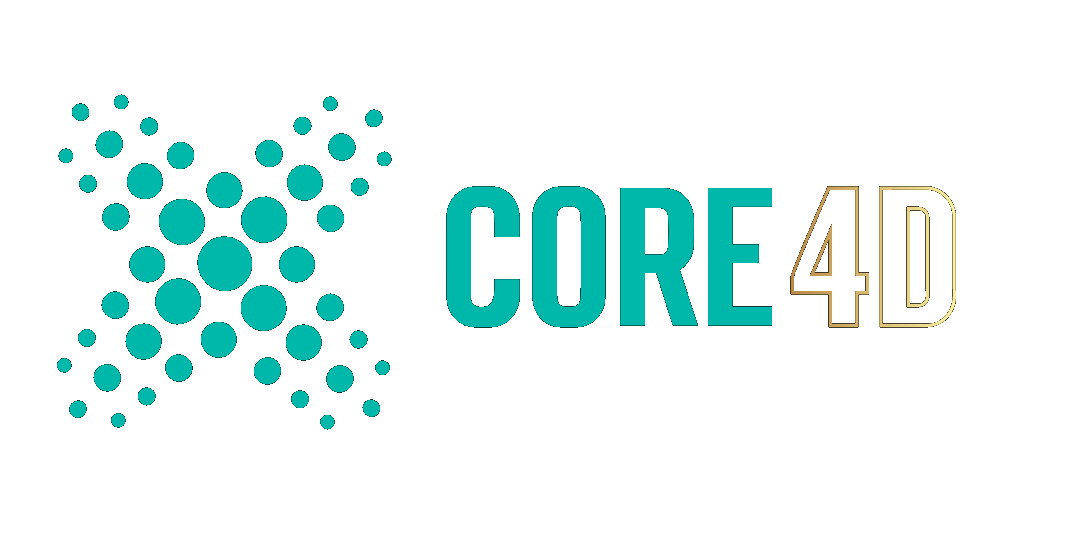Leaderboard
Popular Content
Showing content with the highest reputation since 04/27/2024 in all areas
-
Dear members In December, we are planning to remove ads permanently. We all know and understand how annoying they are but they helped us run the forums : ) Now we are in position to remove them for registered members and improve browing experience. This is made possible by contribution from a member which wants to remain anonymous and we wanted to say thank you to this person publicly10 points
-
I've been wanting to do some 'space' scenes for a while but tools to create star fields, planets, nebulae, etc. either don't exist or (if they do) are commercial plugins. So I decided to write my own. I've got several in the works but the first is now available - a shader for creating background star fields called 'StarScape'. Rather than post multiple sample renders here, you can see a few on my site at https://microbion.co.uk/html/starscape.htm I'm no artist, so I'm certain many people will be able to do a lot better than that 😀. It's completely free, has a full manual and is available for C4D 2024 (Windows and macOS) and 2025 (Windows only). I'll upload the 2024 version to the Downloads section here or you can get it from my site at the above link. Steve8 points
-
Hello everyone I am happy to announce that of Decemeber 1.st adsense will be removed. This will make the forum browsing experience become much nicer Thank you!6 points
-
I would like to present you totally new way to create sky lighting mainly for arch-viz exterior usage but it is good for interiors too because it has some specific options. Advanced Sky for Cinema 4D : Cloudy sky simulation with soft transition from clear to cloudy sky included all three PRG, Hosek Wilkie and Preetham models Sun height, Sky rotation with individual HDRI map rotation connected to global Sky horizontal rotation Many options to change color of Sky models and HDRI maps like temperature, tint, saturation, exposure, hue... Individual control for Sun parameters Ground diffusion light which can improve brightness of polygons that are towards ground with included GI ( so it looks real not flat ) Horizon maps with included alpha - they can be scaled, moved with repeating effect Special ground plane for HDRI maps which doesn't have included ground - fully customizable PRG light color compensation to looks the same as Hosek-Wilkie HDRI's mixing - you can mix two HDR maps using different options for them ! Camera Exposure and White Point was additionally added to have better control on scene colors. HDRI reflection only object for creating custom reflections. It can be scaled by different ways and customized with color corrections. Tinting for all HDRI maps is now available. It fully works with other color corrections. D65 color correction as option was added to all HDRI maps. This is workaround for C4D issue while using ACEScg color space - HDRI maps looks wrong by default. Special Horizon reflection only map with cast shadow option. Advanced tabs for controlling Reflection and GI impact. Reset color option for individual Ground and Tint corrections. Extended parameters which works above original 100% to create specific effects like saturation, color corrections. Available : https://archviz4d.gumroad.com/l/pdmwo Self-explanation manual :5 points
-
New Tutorial: And a demo project file: stylized-wooden-ladder_vD01.c4d5 points
-
5 points
-
The new update came out a few hours ago ... I was getting anxious about when that would come out as I had unavoidable delays with my next feature suggestions list... It's quite a big update ! Lots of things to explore. I'm still waiting for Rocket Lasso to air something so I can understand what those "user-defined particle properties" are... Full feature list: https://help.maxon.net/c4d/en-us/Default.htm#html/33010.html?TocPath=_____3 Rest of MAXON ONE showcase: Soon a new Ask the Trainer will air. It is titled special so I guess it will be about 2025.15 points
-
I would like to present advanced Sky-Rig system for Cinema 4D. Octane and Redshift versions. Using this rig you can have possibility to change every parameters of Sky, Horizon and HDRI map as you like with some special features : - Cloudy sky simulation with soft transition from clear to cloudy sky included special Custom model - Two Sky models included - Custom, Hosek & Wilkie - Sun height, Sky rotation with individual HDRI map rotation connected to global Sky horizontal rotation - Many options to change color of Sky models and HDRI maps like temperature, saturation, exposure, gamma - Disconnected Sky power from Sun Power - fell free to change them individually - Individual color controls for Sun and Sky parameters - Support for Horizon Line maps with included alpha - they can be scaled, moved with repeating effect - Virtual ground plane for HDRI maps which doesn't have included ground that works like backlight - fully customizable - Reflection only HDRI and 8-bit spherical map support - Two HDRI maps for fast switching and comparison - Camera white point included - Reset to default buttons Redshift : Available on Gumroad : Octane : https://archviz4d.gumroad.com/l/yqfoj Redshift : https://archviz4d.gumroad.com/l/pdmwo5 points
-
This nice little helper plugin creates brick wall and offer various parameters to control the final look. Single object is created with selections for brick and grout available. Here is a short video of it in action Find the plugin in store: https://www.core4d.com/ipb/store/product/50-brick-wall/ To install simply import it into content browser Requirements: Cinema version 2025+ is required5 points
-
Figured I haven't posted any recent work here for a while so here's a few of my better recent videos. The ones at the top are more fun as we've been given more freedom creatively to do what we think is best rather than taking orders from the suits with excel spreadsheets. All productions are 4-7 days of work. c4d 2024, octane 2023, rendering on 10x geforce 4090 cards. Not much in terms of post work, we tend to get it 95% there in-render, mostly just brightness, contrast and saturation changes. Plus a few lens flares on the top video.5 points
-
5 points
-
Another day, another setup inspired by a C4D thread. Here's a basic umbrella rig using KineFX, with a very basic IK chain driving the thing. houdini_qO0fR14w27.mp4 KineFX_Umbrella_Setup.hiplc5 points
-
Here is a free node which interprets particle data. This means you can import particle attributes into Neutron graph by particle group and do what you want with it : ) 228_Neutron_Particle_Import.c4d5 points
-
There are some very interesting new features. Particles have an extensive list of new functionalities from which the following stand out. The Field-driven density distribution of particles is highly appreciated along with in-built noise shaders for both distribution and emission. Density control shaders and Fields is something I've been asking for MoGraph for years. Finally it can be achieved through particles. Noise Sampling for Color and Data Mapper https://help.maxon.net/c4d/en-us/Content/Resources/Images/2025-2_Particles_NoiseSampling_01.mp4 https://help.maxon.net/c4d/en-us/Content/Resources/Images/2025-2_Particles_NoiseSampling_02.mp4 Neighbor Search algorithm for Flock, Predator Prey and Blending Similar to the geometry density coloring effect I've been asking. Some Scene Node Capsules are now directly available with other primitives from drop-down menus. This was something I was actively arguing about from early versions of Scene Nodes as it was a closely UX-related issue. Things were pointing to parallel ecosystems of the same tools being developed under the same application or tools that were not that easily accessible that would inevitably lead to confusion or frustration among new and old users. It wasn't too long ago you could finally make capsules accessible from custom pallets but that required from users to know how to do that and as SceneNodes was so actively characterized as experimental or system for advanced users, people would prefer staying away from it missing some key features that were not that hard to use after all. Personally I extend my custom Layout with capsules supported by the OM every new version. Now the Line Spline is available along with the Break Spline, Branch Spline (which is an easier MoSpline Turtle), Catenary Spline, Dash Spline, Electric Spline, Partition and Pulse Spline. What I don't know is if they re-developed those tools in C++ or if they are just links to the node implementation with modernized icons to fit with the rest of UI. Well, there are still some argument about what should be characterized as a Generator what as a Modifier and what as a Deformer... For example the Branch Spline is more fitted to the Generators club as it does create additional splines on top of the original but I guess they run out of ideas on how to represent it with a new icon to avoid confusion with the MoSpline... Which leads to other old arrangement arguments like why don't we just have new features part of older tools as modes... For example the Branch Spline as Mode of the MoSpline... Break, Dash, Partition and Pulse modes of a single spline deformer/modifier or Wrap, Shrink Wrap and Spherify as modes of a single deformer... Looking forward to seeing all distribution nodes as modes in the Cloner and Blue Noise as a mode of the Push Apart Effector. New mode for the Look at Camera expression I always thought this to be an old remnant from earlier C4D versions... I never used it because I achieved the exact same effect using the Target tag... I still don't know what the difference between them is... Some unfortunate translation issues: Weird title, not available in English (fixed the next day) https://help.maxon.net/c4d/en-us/Default.htm#html/OFPBLEND-FP_BLEND_OBJECT_OUTPUT.html MAXON ONE capsules are not documented... Bad marketing as other users don't know what they are missing Things that we saw in the teaser video but they are not documented (yet) Constellation Generator (Plexus effect) Liquid Simulator (yeah... the thing that should be teased the most was not)4 points
-
Maxon Unveils Game-Changing Cinema 4D 2025 Update: Enhanced Modeling, Texturing, and Scene Nodes March 31, 2025 – Los Angeles, CA – Maxon has officially announced the highly anticipated Cinema 4D 2025.1.4 update, promising groundbreaking new features that will redefine the 3D animation and motion graphics industry. This latest iteration of Cinema 4D introduces significant improvements to modeling, texturing, Scene Nodes, and animation workflows, ensuring a more seamless experience for artists. Official Statement from Maxon’s CEO “Cinema 4D 2025.1.4 is not just an update—it’s a revolution. We’ve listened to our users and implemented features that streamline workflows, accelerate creativity, and push the boundaries of what’s possible in 3D design. Our latest enhancements to modeling, texturing, and Scene Nodes will empower artists like never before.” — David McGavran, CEO of Maxon Key Features of Cinema 4D 2025.1.4: 🔹 Enhanced Parametric Modeling Tools – New and improved parametric objects offer greater control, including advanced spline editing and interactive beveling. 🔹 Advanced Scene Nodes 2.0 – A major update to Scene Nodes introduces a more intuitive interface, expanded procedural modeling options, and real-time performance boosts. 🔹 Improved UV Packing and Unwrapping – A completely reworked UV workflow includes automated packing, distortion minimization, and island grouping for better texturing efficiency. 🔹 Neural Render Engine (NRE) – Cinema 4D now features an AI-powered render engine that reduces render times by up to 90% while maintaining photorealistic quality. 🔹 Real-Time Path Tracing – A fully integrated real-time path tracer allows users to see near-final renders directly in the viewport. 🔹 Auto-Rigging AI – Character animation just got easier with an intelligent rigging system that auto-detects joints and optimizes weights instantly. 🔹 HoloC4D VR Integration – For the first time, users can sculpt, animate, and render in a fully immersive VR environment. 🔹 Redshift Cloud Render – A new cloud-based rendering system allows users to offload heavy render jobs and access high-performance GPU farms directly from Cinema 4D. 🔹 Deepfake MoGraph Generator – A new AI-assisted tool that generates realistic face animations from a single image input. 🔹 AI-Assisted Material Suggestion – The new AI-driven material engine suggests realistic textures and shader settings based on your scene context. Spline SDF Smooh blending of 2D splines. Outline Capsule Unlimited number of oulines with the new Outline Node and capsule Chamferer The new Chamferer generator brings non-destructive, parametric editing on individual spline control points Field Distribution Cloner Mode Fields can now be used to place children instances by mapping the hierarchy of the children to the intensity of the field. Release Date and Availability Cinema 4D 2025.1.4 will roll out as a free update for all Maxon One subscribers starting April 1, 2025. Perpetual license holders will have the option to upgrade at a discounted rate. For more details, visit www.maxon.net. Exclusive Interview with Maxon’s CEO, David McGavran Q: What was the main focus for Cinema 4D 2025.1.4? David McGavran: “Our primary goal was to refine and enhance the tools that artists use daily. We wanted to create a more intuitive and efficient experience, whether it's through procedural modeling, advanced texturing, or improved rendering. The new Scene Nodes 2.0 is a huge leap forward, allowing artists to build complex structures with ease.” Q: How does this update compare to previous ones? David McGavran: “While every update brings innovations, this one focuses on practical enhancements that improve workflow speed and creative flexibility. We've also made significant improvements to UV workflows, Boolean modeling, and dynamic simulations based on user feedback.” Q: Can you give us a sneak peek into the future of Cinema 4D? David McGavran: “Absolutely. We are already developing features for Cinema 4D 2026 that will push procedural modeling even further. Expect deeper Redshift integration, better scene organization tools, and an overhaul of particle simulations. We're also exploring more real-time collaboration features to make remote workflows even smoother.”4 points
-
New around here and back in C4D land after a VERY long break. I was an avid Modo user and also I'm a former Foundry employee from back around the time of the acquisition 😅 although I was a designer, not a product manager but I do still have a bunch of friends there and sadly when development stopped, some of my friends got laid off. The TL;DR of why modo probably isn't around is its small foothold in professional markets. It's the best modeller out there, nothing else even comes close. There's one or two people in most VFX studios and they're generally very happy and very productive. But Modo in its early days had a huge number of hobbyist users. Post buyout, they started leaving in droves, in part initially due to the Foundry wanting to push it further into VFX (Which didn't work) and then they pivoted to a number of product design contracts and focused a lot of development there. The hobbyists initially frustrated and then priced out, they left mostly for blender. A lot of professional users stuck around, but those relationships often became more strained over time. Modo was never the most stable application and it's had a rocky history with stability depending on release. Some might bring some awesome features, but it also might crash 10 times a day. A lot of them left too. In terms of features though, there's a lot of incorrect info out there about Modo - it had a rep for only being a modeller, which just wasn't true, it had a bunch of awesome features: Dynamics, some pretty decent mograph/replication tools, sculpting and painting (About on par with boy paint FWIW), a kickass (But CPU only) renderer, super intuitive material workflow, some fairly decent animation tools and some crazy customisation capabilities. But it was very much a jack of all trades and none of those aspects were strong enough compared to the modelling. It was either "it only does modelling right?" or "Every feature apart from modelling sucked" the truth as always was somewhere in the middle. It covered a lot of the same ground as Blender, with a lot of the same weaknesses - it just cost much more 😂 I imagine unless you were a serious modeller and super committed it became a very hard sell. I've now made the decision to move the bulk of my work back to C4D, as I'm not a huge fan of Blender and hate Autodesk with a passion. I've always had a soft spot for C4D and it was my main package for about 5 years before Modo. I'm not a super serious modeller and most of what I do is product shots and mograph adjacent things. I'll still be doing my modelling in Modo for the foreseeable though, they've issued a 10 year EOL license that anyone can get ahold of. My commercial license runs out next month. ...that was quite a long TLDR, but someone might find it interesting IDK.4 points
-
ok, main thing here is that sometimes too much detail is a bad thing. Your displacement map is a 2000x4000 image which is fine, but youve told octane's displacement to use a resolution of 8000x8000. This means the displacement is going to start showing the lower resolution of the image in the geometry. Lower the resolution of the displacement to 4k or 2k, then on top of that add in 2-3 pixels of gaussian blur below to give it a little more chance at being smooth. Next you can bump up the AA filter size a little. The default is 1.2 pixels wide, youll be fine with 1.3 or 1.4 Then I actually lowered the reflection depth down from 32 to I think about 10. Your letters are reflecting each other, making reflections of reflections. This wouldnt be so bad, but... ... your glass is too perfect. With 0% roughness you dont have glass, you have the most pristine diamond in the world. Ive taken the greyscale displacement map and piped it into the roughness of the glass, this way only the lettering will get a slightly rougher/softer finish. Its then dialled way back by setting the mix value of the roughness channel to 0.02 so it only affects it very slightly. This gets me from here to here4 points
-
Dear members We are happy to announce brand new Youtube channel with focus on C4D node system. In our research we realized that training content for nodes is very sparse and lacking in quality and depth. We already have two lessons available which will be part of ongoing series. Humble request from our side is that, even if you are not into nodes, please subscribe in order that the channel grows which will enable us to monetize it down the road. On longer timeline this can enable us to reduce the subscription period or even remove it alltogether and open up forum for many more artists. https://www.youtube.com/@CORE4D Thank you and enjoy the content! P.S. Any member willing to contribute to the channel is more than welcome - drop us a message : )4 points
-
One thing that irks me with every simulation tech I have used so far: Most of the time I want to emulate the movement of something from the real world, as closely as I can. And most of the time it's endless fiddling with somewhat abstract parameters to achieve the realistic movement I know from the physical object. It really should be the other way around. Let me make my object, define it's size and weight and then let me choose from fine-tuned, well-tested presets. That's water! Or milk. Or sand. And then offer an advanced mode where I can fiddle around with advection and all the stuff 'under the hood'. But really, let me express my artistic vision through my everyday-knowledge of the real world. I don't want to study particle physics for any simple sim I do.4 points
-
Absolutely, and to you my friend and from me to you all 🙂 🤪✨ I know I post this every year, but never stops being funny. CBR4 points
-
Time to revive this thread, here is a fun one 🙂 12_Butterfly.c4d4 points
-
Dear members Adsense is gone now. This should vastly improve browsing experience. Please let us know if you notice some remnants so we can act on it. Big thanks to all subscribers and contributors, this would not be possible without you ❤️4 points
-
CORE4D has got a great beginning series: My Scene Nodes 101 series isn't exhaustive but has some simpler examples: For more advanced training, Dominik Ruckli has some great videos: Dominik Ruckli - YouTube Additionally - once you've got a handle on Scene Nodes data structures and beginning/intermediate setups, you can generally follow along with Houdini / Geo Nodes tutorials. For those, it is hard to do better than Entagma: Entagma - YouTube4 points
-
Hi, I'm an old core4d user but I've never posted anything before, I'll introduce myself here and apologize for my bad English. My name is Gianluca (Abetred) I am present on other platforms and I consider myself a problem solver and an experimenter in the fields of 4D cinema, xpresso, thinking particles and python. I have an unhealthy passion for particle systems and related systems. I would like to introduce you to some experimental projects that I have been carrying out for some time to force the use of CUDA acceleration to manage intensive computational calculations, usually entrusted to the CPU through third-party libraries. I would like to point out that the tests refer to pure python code and only accelerate the datasets passed to the cuda function, the python code remains single core and unfortunately has its limits. The first project (test) is the 3d flocking of TP interactive entities and the attached video is not the final result (which has much better performance) but an intermediate point. Flocking simulation parameters: Separation: Boids avoid mutual collisions by maintaining a pre-established minimum distance. Alignment: Boids tend to match the speed and direction of their neighbors. Cohesion: Boids cluster toward their group's center of mass. Boundaries: Boids remain within the simulation domain with natural behavior. Speed Limits: Speed is limited within a preset range for realistic movement. Prey: Boids can track moving targets relative to distance. Obstacles: Boids interact with obstacles in a realistic way. All parameters are adjusted by response factors to recreate a smooth reaction. Further implementations are possible, such as the tracking ray of complex obstacles which consists in predicting the most reliable escape route while avoiding collisions, the direction of travel which maintains an axis of rotation in the direction of acceleration and the arc of vision which limits the interactions only with visible boids within a circle section, for greater realism of the simulation. The second test is developed around a surface of points simulating a moving fluid... Some significant data on the scene: - The "liquid surface" is a mesh composed of 40,400 points, without faces or segments. - The spoon interacts with the surface through a selection of about 600 vertices (but there could be arbitrarily many more without excessively burden on performance). - The VertexMap is generated for visual feedback only; the actual calculation is handled internally by the code. The code is executed in real time by a Python Generator and is responsible for managing the interaction between the two objects, calculating the effect of the waves in the fluid, calculating the positioning of the points. This test is also in the full experimental phase. I point out that in the following video the cuda acceleration refers to the first part of the video, the one indicated as "raw simulation" and that already applying the data to the vertexmap slows down performance because it is managed by the CPU. But let's go further... The revolution is evident not only for the simulation in viewport. The real advantage lies in the construction of the cache (I'll give the example with the alembic export or a trivial writing of the dataset in a file), which is also calculated by the GPU resulting in a real time saver. Thanks for your attention, I will try to keep this topic updated...4 points
-
Hi CG-fans! Nice of you to drop by and check out my little corner where I would like to present my handmade texture collections. https://mlon.gumroad.com/ No shameless self-promotion whatsoever here! 🙂 This started out as a free-time fun project where I made photos of my surroundings and created textures from them that I gave away reaaally long ago on Cg Channel and Lightwave forums. Then I thought of creating a few new packs because I like doing it and see if I can sell them to likeminded people who could use them in their projects. I am mostly focused on archviz and have worked on several tv-series, animations and movies. So, here I am selling you my stuff! 🙂 Each material has a C4D scene and rendered with Corona. This is my first Gumroad page and am not even sure it works. We'll see if I have set it up properly, haha! Anyway, if you have suggestions, problems or tips then don't hesitate and let me know. Oh and if you buy 2 packs you get the third for free. Just shoot me a mail with the ones you bought and I will send you the third one. Thanks! Cheers, mlon4 points
-
Obviously biased here but C4D is quite a package at the moment 🙂 Regarding Modo, abandoning such a large code base must have been difficult decision. There must be a lot of tech that will be extracted and placed elsewhere. There is also a remote possibility, pure speculation of course, to create new3D package.4 points
-
Despite the fact about the constant whining on the forums about C4D and that it was considered an amateur tool a decade ago it has now outlived a good number of competitors.4 points
-
4 points
-
Yes indeed, I am also thinking about GeoJSON support and load from OpenStreetMap, but the way the road are designed is different. However, there is a new big update with the support of median stripe (not sure about the translation) : - Median - Better performance - Undo / Redo - New bike texture https://code.vonc.fr/pathphalt You can try this configuration : {"roads":[{"prio":1,"curve":"centripetal","sub":40,"shear":0,"tex":"wear2","texL":"","texR":"","lineOnly":false,"points":[{"id":0,"prio":1,"width":30,"wLine":5,"texL":"","texR":"","pos":{"x":-100,"y":0,"z":0}},{"id":1,"prio":1,"width":30,"wLine":5,"texL":"","texR":"","pos":{"x":0,"y":0,"z":0}},{"id":2,"prio":1,"width":30,"wLine":5,"texL":"","texR":"","pos":{"x":100,"y":0,"z":0}}],"modLignes":[{"id":0,"tex":"empty","width":"3","offset":"0","shear":"0","side":"gauche","color":"#ffffff","pos":{"x":39.396875316,"y":0,"z":-15}},{"id":1,"tex":"empty","width":3,"offset":0,"shear":0,"side":"droite","color":"#ffffff","pos":{"x":38.086987303,"y":0,"z":15}},{"id":2,"tex":"empty","width":"3","offset":"0","shear":"0","side":"gauche","color":"#ffffff","pos":{"x":-62.123474544,"y":0,"z":-15}},{"id":3,"tex":"empty","width":"3","offset":"0","shear":"0","side":"droite","color":"#ffffff","pos":{"x":-67.302948819,"y":0,"z":15}},{"id":4,"tex":"empty","width":"3","offset":"0","shear":"0","side":"droite","color":"#ffffff","pos":{"x":-30.103290328,"y":0,"z":15}},{"id":5,"tex":"stop","width":4,"offset":-9,"shear":0,"side":"droite","color":"#ffffff","pos":{"x":27.00899457,"y":0,"z":15}}]},{"prio":1,"curve":"centripetal","sub":40,"shear":0,"tex":"wear2","texL":"","texR":"","lineOnly":false,"points":[{"id":3,"prio":1,"width":30,"wLine":5,"texL":"","texR":"","pos":{"x":20,"y":0,"z":-100}},{"id":4,"prio":1,"width":30,"wLine":5,"texL":"","texR":"","pos":{"x":20,"y":0,"z":0}},{"id":5,"prio":1,"width":30,"wLine":5,"texL":"","texR":"","pos":{"x":20,"y":0,"z":100}}],"modLignes":[{"id":6,"tex":"empty","width":"3","offset":"0","shear":"0","side":"gauche","color":"#ffffff","pos":{"x":35,"y":0,"z":-17.837263259}},{"id":7,"tex":"empty","width":3,"offset":0,"shear":0,"side":"gauche","color":"#ffffff","pos":{"x":35,"y":0,"z":24.403466582}},{"id":8,"tex":"empty","width":"3","offset":"0","shear":"0","side":"droite","color":"#ffffff","pos":{"x":5,"y":0,"z":-59.900413914}},{"id":9,"tex":"empty","width":"3","offset":"0","shear":"0","side":"droite","color":"#ffffff","pos":{"x":5,"y":0,"z":31.585357038}}]},{"prio":1,"curve":"centripetal","sub":40,"shear":0,"tex":"bike","texL":"","texR":"","lineOnly":false,"points":[{"id":6,"prio":1,"width":10,"wLine":5,"texL":"","texR":"","pos":{"x":-70.627555784,"y":0,"z":51.190721316}},{"id":7,"prio":1,"width":10,"wLine":5,"texL":"","texR":"","pos":{"x":-13.172042513,"y":0,"z":-35.25534822}},{"id":8,"prio":1,"width":10,"wLine":5,"texL":"","texR":"","pos":{"x":84.80652565,"y":0,"z":-76.60485278}}],"modLignes":[{"id":10,"tex":"empty","width":"3","offset":"0","shear":"0","side":"droite","color":"#ffffff","pos":{"x":-4.494001118,"y":0,"z":-35.631325338}},{"id":11,"tex":"empty","width":"3","offset":"0","shear":"0","side":"gauche","color":"#ffffff","pos":{"x":-13.691259738,"y":0,"z":-41.16251629}},{"id":12,"tex":"empty","width":"3","offset":"0","shear":"0","side":"droite","color":"#ffffff","pos":{"x":-52.492035814,"y":0,"z":26.206269416}},{"id":13,"tex":"empty","width":"3","offset":"0","shear":"0","side":"gauche","color":"#ffffff","pos":{"x":-62.304384741,"y":0,"z":23.369488233}},{"id":14,"tex":"yield","width":3,"offset":-2,"shear":-1,"side":"droite","color":"#ffffff","pos":{"x":-33.318294531,"y":0,"z":-5.56126942}},{"id":15,"tex":"empty","width":"3","offset":"0","shear":"0","side":"gauche","color":"#ffffff","pos":{"x":-43.506444211,"y":0,"z":-8.426703539}},{"id":16,"tex":"empty","width":"3","offset":"0","shear":"0","side":"droite","color":"#ffffff","pos":{"x":40.084634038,"y":0,"z":-57.833407636}},{"id":17,"tex":"empty","width":"3","offset":"0","shear":"0","side":"gauche","color":"#ffffff","pos":{"x":39.832640212,"y":0,"z":-68.339736675}},{"id":18,"tex":"yield","width":3,"offset":-2,"shear":1,"side":"droite","color":"#ffffff","pos":{"x":13.538677417,"y":0,"z":-46.528428659}}]}],"modSols":[{"id":19,"tex":"asphalt","color":"#ffffff","rot":"0","fill":"medianBevel","lineTex":"lineUsed","lineCol":"#ffffff","lineW":3,"lineOff":-1,"pos":{"x":60.003474111,"y":-0.1,"z":-33.761216957}},{"id":20,"tex":"asphalt","color":"#ffffff","rot":"0","fill":"medianBorder","lineTex":"lineUsed","lineCol":"#fbe01c","lineW":3,"lineOff":-1,"pos":{"x":60.284636448,"y":-0.1,"z":25.249393975}},{"id":21,"tex":"asphalt","color":"#ffffff","rot":"0","fill":"medianBevel","lineTex":"lineUsed","lineCol":"#ffffff","lineW":3,"lineOff":-1,"pos":{"x":42.885203556,"y":-0.1,"z":-82.208960311}},{"id":22,"tex":"asphalt","color":"#ffffff","rot":"0","fill":"medianBevel2","lineTex":"lineUsed","lineCol":"#ffffff","lineW":3,"lineOff":-1,"pos":{"x":-18.403487882,"y":-0.1,"z":-56.121304811}},{"id":23,"tex":"asphalt","color":"#ffffff","rot":"0","fill":"medianBevel2","lineTex":"lineUsed","lineCol":"#ffffff","lineW":3,"lineOff":-1,"pos":{"x":-0.159001486,"y":-0.1,"z":-24.258869672}},{"id":24,"tex":"asphalt","color":"#ffffff","rot":"0","fill":"medianBevel","lineTex":"lineUsed","lineCol":"#ffffff","lineW":3,"lineOff":-1,"pos":{"x":-77.120233245,"y":-0.1,"z":25.41978791}},{"id":25,"tex":"asphalt","color":"#ffffff","rot":"0","fill":"medianBevel","lineTex":"lineUsed","lineCol":"#ffffff","lineW":3,"lineOff":-1,"pos":{"x":-16.930274425,"y":-0.1,"z":31.746082441}},{"id":26,"tex":"plain","color":"#2687fd","rot":"0","fill":"","lineTex":"","lineCol":"#ffffff","lineW":3,"lineOff":0,"pos":{"x":-23.515035174,"y":-0.1,"z":-26.680503951}},{"id":27,"tex":"plain","color":"#2687fd","rot":"0","fill":"","lineTex":"","lineCol":"#ffffff","lineW":3,"lineOff":0,"pos":{"x":18.996212676,"y":-0.1,"z":-54.284936783}},{"id":28,"tex":"plain","color":"#2687fd","rot":"0","fill":"","lineTex":"","lineCol":"#ffffff","lineW":3,"lineOff":0,"pos":{"x":46.37003041,"y":-0.1,"z":-65.996907718}},{"id":29,"tex":"plain","color":"#2687fd","rot":"0","fill":"","lineTex":"","lineCol":"#ffffff","lineW":3,"lineOff":0,"pos":{"x":-45.21484908,"y":-0.1,"z":-1.738057586}},{"id":30,"tex":"plain","color":"#2687fd","rot":"0","fill":"","lineTex":"","lineCol":"#ffffff","lineW":3,"lineOff":0,"pos":{"x":-59.130172915,"y":-0.1,"z":28.602254614}}],"markings":[],"background":{"x":0,"z":0,"sx":1,"sy":1,"rot":0}}4 points
-
They should make it so even Maxon One subscribers have to pay additional to get them - call it Maxon One Pro Plus Ultimate - so the number of people globally who get to check them out is less than 50.4 points
-
I do wonder how many of these crashes people complain about are just the current realities of gpu based render engines all being less stable than their cpu counterparts due to endlessly changing gpu drivers. How much is c4d itself being unstable vs redshift being the new standard render engine. 99% of my crashes are octane. Even if redshift is a fraction of that, it could still be the main reason,4 points
-
4 points
-
That is not entirely accurate. 3ds max is the worst example you can bring for the 3d app table to discuss, and i know that for a fact, since i used to work with it and my company still uses it to render unfortunatelly. In short, 3ds max is one of the most overpriced apps in the world for studios (big or small) that cannot use indie licenses such as mine. its around 2.5 k almost per year and that is only the software. Then you must start filling it with other plugins to make it usefull, starting with its most popular renderer vray or corona wich is paid separately. Almost no one uses arnold in 3ds max wich is the actuall inbuilt renderer (although its a good one). But it doesnt end here. In studios like mine we also pay for Forest tools (plugin), Tyflow (plugin) and a bunch of other plugins to solve basic stuff like take system and such. In the end the money you spend in 3ds max is a small fortune and c4d is still better for charater animation, motion, and a lot of other stuff. I believe 3ds max is still popular because of its legacy, a large user base and the connection with the arch viz business. But i agree with you when it comes to Maxon policies of making us pay for stuff we dont use. I really dont need nothing else but the c4d app. Heck, i eaven dont need RS altought i like to use it. So the best they can do is to give users the power of choice. In studios like mine c4d is used to as part of a pipeline along with houdini and 3ds max. I dont need an extremely expensive software with things i'll never use. cheers4 points
-
WTF Maxon? This is insane. I don't want redshift, it's such a laggy mess. How do You plan to compete with free software that is now superior in most areas with the price hike like this? C4D is lacking in almost every area, there is not even a built in fast rasterisation renderer, nodes are barely usable and not compatible with most of the software functionality. Dynamics and particles live in a different hardware areas and are virtually not compatible with each other. The core rewrite stuck in a limbo. How do You think this will end for you? The only thing that prevents my studio from migrating to Blender is object manager's simplicity. How do you think this will unfold when Blender fixes it's UX? Half of our 3D stuff is Blender native. None new employees with c4d skills. This ex Adobe guy ruined the future of this software.4 points
-
From an email: Improved Texture Standards Our textures are higher quality than they were 9 years ago, but our format changes have lead to an inconsistent user experience. So to increase consistency, we’re announcing new texture standards: a framework that sets expectations for what you’ll get when you download textures. In a nutshell, here's the main changes: Defined PBR Maps: A predictable set of deliverables: Base Color, Roughness, Normal, Displacement, Ambient Occlusion, Metallic and a new ORM map for realtime. Improved Filenames: All files are named with the new structure of: Poliigon_DescriptiveName_AssetIDNumber_MapName (no more confusing _metalness at the end of every file!) More Resolutions: 8K-1K for large, 8K-.256 for small. Set Physical Sizes: All surfaces are 2.5x2.5m (large surfaces) or 30x30cm (small surfaces) Material X - An interoperable industry compatible .mtlx file that can be natively imported into multiple softwares. From today all new textures will meet these new standards, including the latest batch of 13. Our goal is to remaster the entire texture library to these standards by the end of 2025. In certain circumstances, a texture may be unpublished if the source material is too old, but access for all previous purchasers will remain. https://www.blog.poliigon.com/blog/2024-texture-standards I don't know of any other 3rd party sites actively starting to support Material X, not to mention refreshing their texture libraries from last gen textures. It looks like a first batch of updated materials on their site supports Material X download, for DCCs actively supporting Material X integration.4 points
-
Folks, we have new July release - 2024.5 https://www.maxon.net/en/article/maxon-one-july-release-includes-a-variety-of-beneficial-feature-updates New Features Modeling Split Command defaults to not keeping polygons in the source object Simulation Improvements towards auto generated connectors Translations of parent Connectors are applied in the local space Pin connectors inherit the orientations of the Rigid Body Gathering Connectors in a Null object and moving without affecting relative position Connectors now support Colliders simulation type Connectors support for Spring and Motor Object Spatial sampling location when using MoGraph tags now follow the movement of the connectors The default orientation of Ragdoll changed where the cone points vertically Volume Grid list inside of a volume fieldlayer to choose which grids to sample Particles Cloners and Arrays support Basic Particle Emitters and Forces Collider Modifier has an “iteration” parameter Surface Attractor splits out the strength parameters to Attract Strength and Follow Strength Surface Attractor adds a slider to impact the Object Velocity Strength influence on particles Field Sampling Variance parameter in particle simulation settings Particle Group and External Cache export and import scale support Reproduce Emitter colour options match the options in other Emitters types Math modifier input value field shows Degree units for operations Sin, Cos, Positive Sin, Positive Cos, in Constant source Mode Redshift When Redshift is enabled, Redshift Camera is created when using: Motion Tracking Camera Calibrator Camera Morph Camera Crane Motion Camera Exchange Alembic Points object can be imported as a Particle Group Options added to use custom Alembic export settings for the baking. Scene Nodes Split Node - Based on the Split Command Disconnect Node - Procedural version of the Disconnect command Align Nodes in the Nodes Editor Outline Spline Node - allows artists to procedurally stroke or offset splines Points Modifier - allows artists to use simple node networks to easily make your own modifiers/deformers General Improvements Undo History now accessible within the File Menu For Nodes people or ones that want to try, there is a Points modifier which is really great 🙂4 points
-
4 points
-
Houdini 20.5 will feature a brand new environment for processing and generating textures and compositing them seamlessly with your 3D scene. Internally labeled Project Copernicus, it will be the long-awaited update to the COPs (compositing operators) module. A few highlights: Built with real-time/near real-time performance in mind. It's written entirely in OpenCL so you get 100% GPU acceleration. It also uses Houdini's brand new APEX technology under the hood to provide multithreaded performance enhancements where applicable. Tight integration with Houdini's existing 3D modeling toolset. You can freely import any geometry to use as a texture basis or export texture information to affect your models with. Live updates to the existing lookdev and rendering environment, so you get live render updates as you adjust your textures. OpenFX-compatible, so you can use any 3rd party OpenFX plugins (like BorisFX Sapphire for example). Here is a demo of some truly eye-popping abilities of it (skip to the 7-8 minute mark for the actual demos): Here is another video that shows off even more stuff in Copernicus, from the Houdini 20.5 keynote:4 points
-
Vertex map to define clone density on surface 231_Clone_map_density.c4d4 points
-
Fun little one day project made on my day off yesterday 😄 Had to make my Squidward model a friend. make sure to watch in 4K 😄4 points
-
This should answer all questions about PlantCatalog.4 points
-
My favorite show reels. So epic. I love how they combine screen capture of the software with the rendered outcome. We don't see things like this in C4D reels any more. Vue 5 Infinite demo.mp4 Couldn't find them on the official YT channel... I had to upload them from my personal collection Vue 6 Show Reel 2007.mp44 points
-
dear members, forum is upgraded, we will be working on all little issues as we go. You can freely post and enjoy the forums!4 points
-
New Booleans are definitely better. Far superior hierarchical / tag-based workflow, no longer requires solid operands, operands can now intersect each other with less likelihood of problems, glitching is much reduced in animation setups, surfacing is generally better, and it is faster to calculate than the old system was. It also succeeds in many situations where the old one would fail. So, as someone who has been rigorously testing this for a while, I have to say I am very impressed with it and it is a significant upgrade to Cinema's modelling toolset. CBR3 points
-
The education licensing thing is the biggest thinkable mistake. its plainly stupid.3 points
-
a quick and dirty menger sponge effect. of course, my method is always weird and dumb... 08-sn-menger-sponge.c4d3 points
-
I think I've been waiting for a Field Driver for more than 3 years. I was expecting a SceneNodes implementation or an EXPRESSO integration but the Tag solution is easier and cleaner. Follow Spline Particle Modifier ! I wasn't expecting them to release it so soon ! I think they "fixed" the Plane parameter of the Segment SceneNode primitive.3 points
-
www.yellowstudio.com Application: https://docs.google.com/document/d/1KB5LOlBc3uOL0ExrhwZ44i7dT5G_pBJ4/edit?usp=sharing&ouid=106892802632951291315&rtpof=true&sd=true3 points
-
Some thoughts that I have after my yearly Cinema 4D subscription was over 11 days ago. When I have some free time from 3D works I get Maxon One 14-day trial subscription to check it. And I was very positive surprised ! I used Redshift 4-5 years ago when it was at early stage and went to Octane. But I see that after years they did insane work to make it one of the best renderer which I used and tested. I get some of my raw scenes included product viz, interior and exterior with insane amount of plants with simple materials but included the same bump, normal and displacement maps. After tests I can say that Redshift have the same quality in the terms of light distribution and shadowing detail that unbiased Octane. It is little noisy in dark areas by default but it can be easy improved by changing settings. Octane is much faster to create the same image quality without noise using small scene like product visualization but Redshift is 2-4 times faster if scene is growing especially using many of vegetation with alpha masks. Octane is dying here compared to RS. I know how to speeds up Octane very well but Redshift as biased renderer has many settings to avoid it without loosing quality. Redshift is very well integrated with Cinema 4D. Octane has ( or had because month of absence ) great C4D developer like Ahmet who did great improvements but RS has no problem with using the new scene nodes like distribution which works as multi-instances. I think that RS material nodes are much easier to use and I can get better results within less time than in Octane. For example in Octane everybody use gradient node to manipulate images - in RS Ramp node is way better constructed without the way to manipulate gradient because it has included ranges, exposure and even noise. Many of nodes here are very well thought out even if Octane has it much more. Additional nodes reserved only for One users are great too like Ivy generator but it is like joke that they are priced... Anyway I'm going to stay with Maxon and going to Redshift from Octane. Many materials to rebuild from scratch. I don't have free time like year to learn Blender 😝3 points
-
Shees, that was a lot of data to process in upgrade, forum is over 300Gb. we are working on it in background but everyhting should be in order now, including emoticons 🙂 💫3 points











